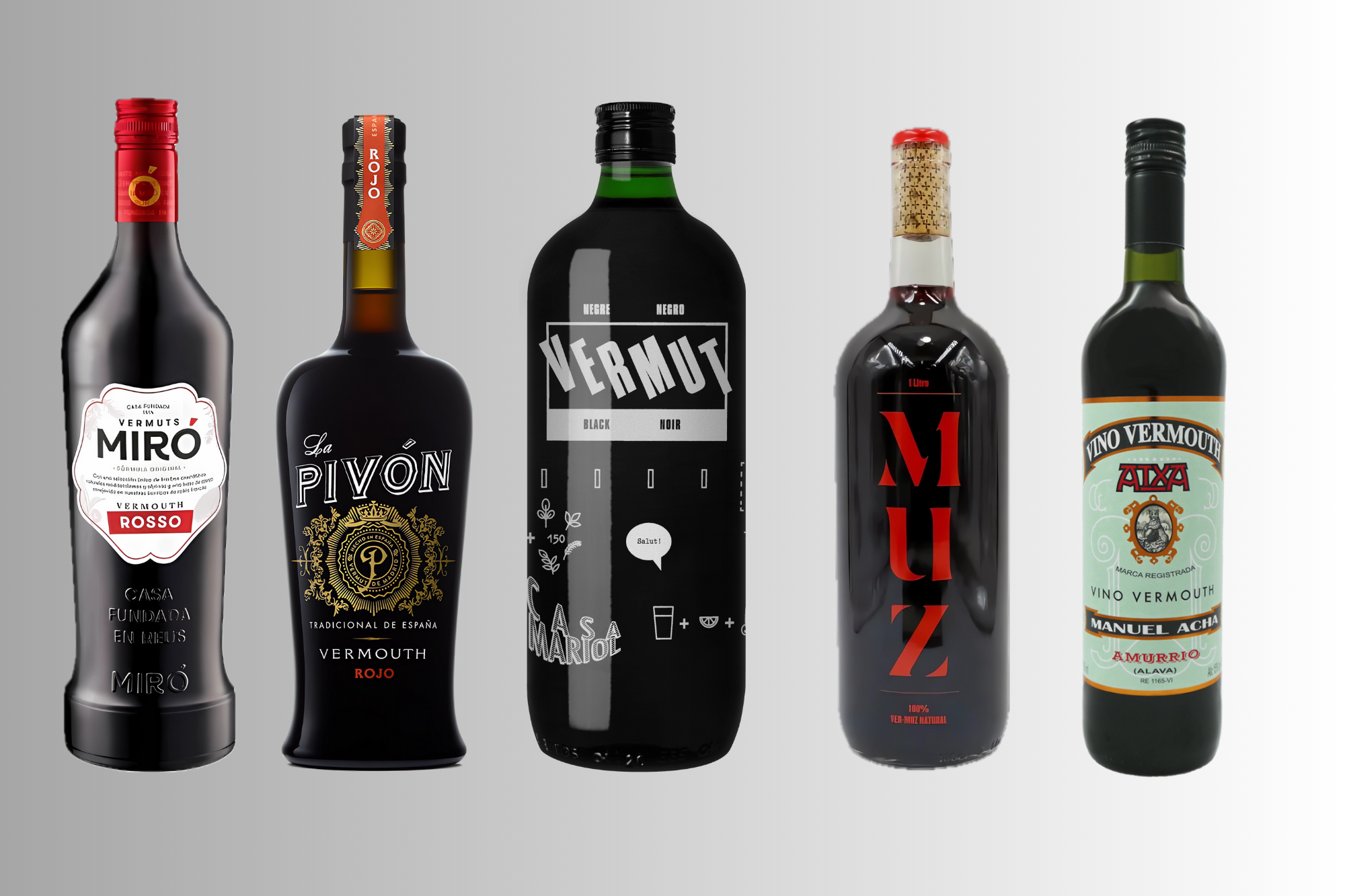5 Spanish Vermouths That Are Not Lustau
Spanish tapas and vermouth
La Hora del Vermut has gotten a lot of press recently, but the tradition of a vermouth hour in Spain has been going strong for decades. A tumbler of sweet vermouth, adorned with an ice cube, an orange slice, and perhaps a green olive fills a lovely stretch of time in the early to late afternoon, customarily before the late Spanish lunch but recently in more of a post work happy hour time slot. Always, in Spain, there are snacks. Salty potato chips. Tiny bowls of fat olives. Picos, the mini bread stick that just loves to be wrapped in a transparent pink slice of jamón. Lustau is possibly the best-known name in Spanish vermouth in U.S. They are also a top name in sherry, but they aren’t the only game in town.
What is Vermouth?
Spanish vermouths
All vermouths are fortified wines, pumped with spirits to up the ABV (historically to help preserve the beverage) and aromatized with the addition of botanicals to boost bitterness and add floral, spiced and herbal flavors that pep up the appetite and might even be beneficial medicinally, depending on who you ask. Stylistically, compared to vermouths from France and Italy (where, specifically in Torino, modern vermouth was born), Spanish vermouths can be more subtle and straightforward. Read more about the difference between Italian and French vermouth. Álvaro de la Viña of Selections de la Viña says of his native Spain, “our landscape and our countryside and our indigenous plants are very similar to those of France and Italy.…there’s a lot of similarities. You go to Penedès and it’s like you’re in the Spanish Tuscany.” Some bottles reflect the nutty, saline, and bready oxidized flavors of Spain’s native sherries.
How to Enjoy Spanish Vermouth
Can you add a splash of soda for fizz, to create a lower ABV spritz-like number? You wouldn’t be the first. In the Basque country, you order your vermouth preparado, and the fortified wine of the house, which often flows out of a tap, gets topped with bubbly water. Need a little more octane, but it’s too early for a negroni? In Bilbao or San Sebastian, you might ask for a Marianito, vermouth “improved” with a glug of gin added and maybe some Campari and or Angostura depending on where you’re drinking. At home, you are free to create your own magic ratio for your apertivo hour drinks–soon you’ll be naming cocktails after friends and family members. Fred-the-neighbor-tivo anyone?
Pick up a bottle or two and compare, but don’t buy more than a month’s supply–like wine, the flavor will degrade–and keep them in the refrigerator next to the fizzy water and the olive jar.
Muz vermouth
Muz Vermouth
Made by an Italian couple who founded Partida Creus in Catalunya, this organic vermouth is batched from a barrel of young red, a barrel of old red, and a barrel of oxidized white. For aromatics, they source a botanical blend from Torino, from an 1870 recipe developed by none other than Signore Carpano himself and macerate it in neutral grain spirits for two moon cycles. Herbal and bitter, this liter bottle is an old world wine lover’s vermouth.
Vermuts Miro
Founded in 1914, the Miró line of vermouths represent classic elegance. Their reserve vermouths are created using the solera method, where wines of different ages are blended, a process typically used in sherry production to ensure uniformity and consistency of product. Their vermouths include a white, red, organic, reserve and fusion, which was made in collaboration with a chef, and has notes of arbequina olives (and Mediterranean herbs as well as salinity.
La Pivón vermouth
La Pivón
Produced in Madrid, these rojo and blanco vermouths have a slightly oxidized flavor that comes from the producer’s use of a “mother,” where a large amount of the last batch of vermouth starts the maceration of the new batch. Warm spice and vanilla are tempered by the typical wormwood bitterness.
Atxa vermouth
One of the only vermouths currently available on tap in the US, this traditional Basque style liquid has been produced in almost the same way since 1831, through five generations of the Acha family.
Casa Mariol Vermut Negre
Casa Mariol Vermut Negre
This rich vermouth gets deep dark color from black walnuts, and has an appealing licorice and cola flavor. Made in Catalunya with local herbs, it’s popular in Barcelona (and here in the states) for its unique yet approachable intensity.







